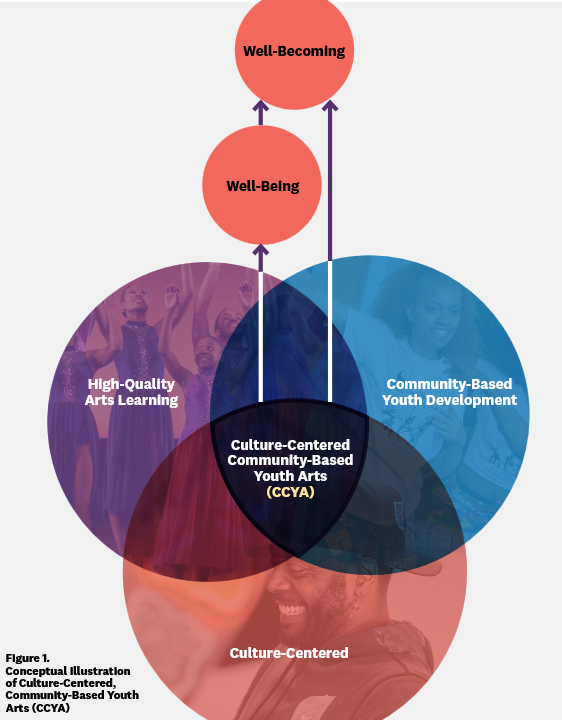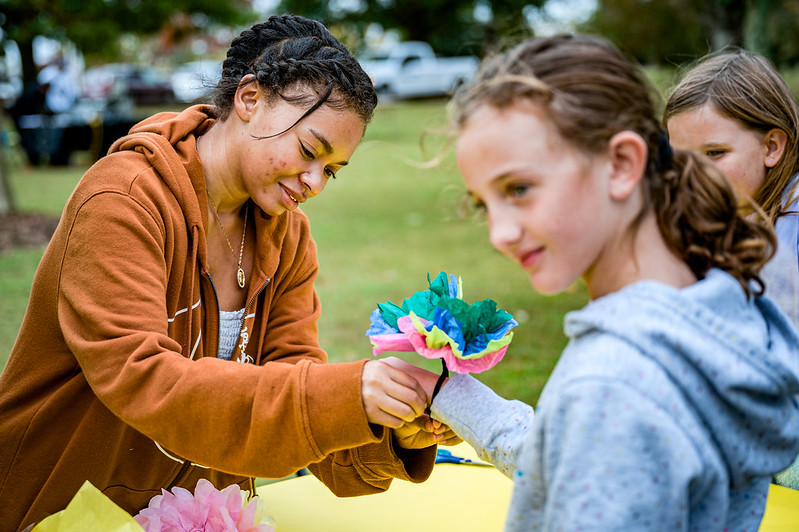As arts learning opportunities become increasingly scarce in schools, many out-of-school organizations have stepped in to fill the gap.
A research team at the University of Pittsburgh set out to examine the values and goals that community-based arts organizations bring to their program designs. Through their study, they defined these initiatives as "culture-centered, community-based youth arts programs" and identified seven key design characteristics along with a variety of reported positive youth outcomes.
Over 18 months, the researchers conducted a multi-method study of 35 youth arts organizations created by, for, and with communities of color across eight U.S. cities—Atlanta, Chicago, Detroit, Louisville, Newark/Paterson, Oakland, Tacoma, and Washington, D.C. Using interviews, focus groups, youth surveys, program observations, and interactive participant-centered activities, they identified common program design strategies aimed at addressing the specific needs and interests of youth in these communities.
Culture-centered, community-based youth arts (CCYA) programs integrate high-quality arts education with youth development practices and culturally sustaining approaches. These programs offer young people opportunities for belonging, identity affirmation, and skill development through the arts. Participants, their families, and teaching artists report that these programs enhance youth well-being and prepare them for the future.
Through interviews with staff and participants, researchers confirmed that youth involved in CCYA programs often experience joy, a sense of accomplishment, and increased confidence and self-worth. These elements contribute to their overall well-being, which includes mental and physical health as well as social fulfillment.

The researchers also identified a concept they call "well-becoming," which refers to progress toward a desired future. This can help young people navigate academic, career, or passion-driven paths.
The study outlined seven ways in which culture-centered, community-based youth arts programs foster well-being and well-becoming:
1. Nurturing Artistic Skill – Programs provide creative spaces where youth can develop their artistic abilities and confidence under the mentorship of dedicated teaching artists.
2. Cultivating Creative Restoration – The arts serve as a tool for healing and renewal, allowing youth to experience joy, centeredness, and flow while disconnecting from life’s stressors.
3. Establishing Artful Sanctuaries – Programs create safe spaces where young people connect with artistically inclined peers and supportive, skilled adult mentors.
4. Fostering Generative Connections – Programs facilitate connections to neighborhood and community resources, providing opportunities to showcase work, network, collaborate, and share artistic experiences.
5. Highlighting Meaningful Pathways – By exposing youth to a variety of arts-related and non-arts-related futures, programs help them envision their potential as adults who value and engage with the arts.
6. Promoting Cultural Visibility – Programs celebrate racial and ethnic identities by affirming the histories and futures of people of color, helping youth feel connected to a larger cultural narrative.
7. Emphasizing Equity Intentionality – Programs actively work to dismantle systemic racial and economic barriers that limit access to meaningful arts experiences while using the arts as a tool for equity and justice.
The study also explored how CCYA programs function within broader learning and development ecosystems—dynamic networks of people, places, and opportunities that shape arts education experiences. These programs are influenced by social and cultural histories, support for teaching artists, community engagement, and the diversity of arts offerings available.
Moreover, CCYA programs and their communities are deeply interconnected: communities support the programs, the programs strengthen communities, and collaboration among programs enhances the overall learning ecosystem.
The researchers advocate for greater attention to CCYA programs in research, policy, funding, and practice. They also highlight the need for increased support for teaching artists, who, like many out-of-school educators, are often underpaid. High turnover among teaching artists can weaken programs, making it essential to recognize and invest in their critical role. The study underscores the importance of sustaining and expanding these transformative arts programs.
Read the report here.
--
Photo credit: City of Greenville
Photo source









